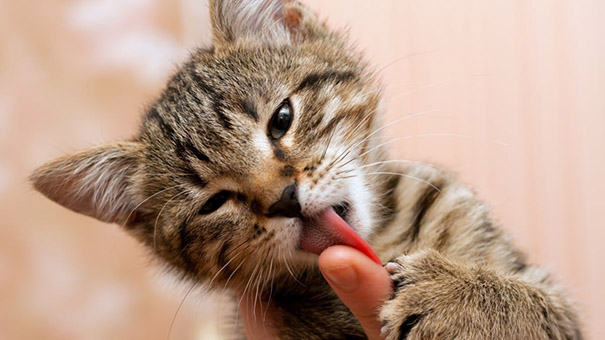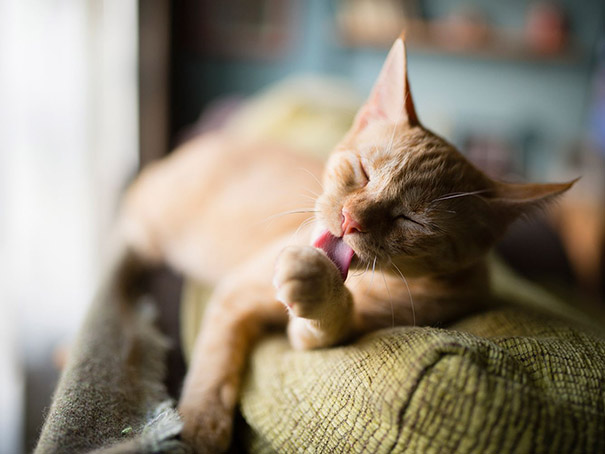Cats are mysterious creatures. How will we decipher their behaviors? This list is an excellent place to start if you want your pet cat to know you absolutely love them!
Watch the video below:
If video is not for you, here are some main points.
Converse With Cats
Even though animals do not speak human speech, some do understand what certain human sounds mean. Talk regularly to your cat. Speaking to them acquaints them with your voice and the emotions attached to different tones you create. Plus, speaking assures them you are paying attention. However, for cats to understand you, you need to understand what their sounds mean first so that you may communicate effectively. You might sound like the crazy cat lady talking to your cat alone, but your pet won’t think so.
The Curled Tail
An excited cat will flick its tail. Remember, the word “excited” does not always mean “happy.” It’s possible your cat feels threatened when flicking its tail. When cats want to play, their tail looks as if it’s waving. What tail movement displays your cat’s love for you? Look for a curved tip, which indicates ease. A tail straight up in the air with a curved tip may mean contentment and a willingness to act friendly.
Let Them Lick You

When cats lick themselves, they’re usually grooming. Many times, if you stroke your cat’s fur, they respond in kind by licking you to reassure you that they love you back. Think of a cat’s lick as the equivalent to humans hugging. For those who think animals licking you is gross, please don’t own a pet. You will disappoint them immensely.
Head Butting
Rams headbutt to fight. Even people head butt to fight. Felines headbutt to say they adore you. Kitty headbutts are non-aggressive and are a demonstration of trust. Heads faced down are weak spots for animals. A cat willing to put its head down to bonk you is a cat that trusts you with their life. Take some time to observe their facial movements. A slow blink means they’re comfortable around you. Blink back, and your cat receives the same message.
Stress Relief, Cat Tree
So maybe they don’t pay the bills or help the kids with their homework, but pets also feel stress! Anxious animals need an outlet extreme emotions. These creatures of habit do not accept change readily, but there are few things you can do to decrease stress in the home whether it’s a new pet, a newborn baby, or a new house. Catnip, as we said before, is good for relaxing them. You can also try herbs like dried chamomile or hops. Toys like a cat tree or scratching post assist cats in channeling that anxiety into energy.
Personal Space, Please!

If you haven’t caught on by now with all the references to wild cats, your feline is a territorial creature. Like in any relationship, no one likes smothering. Allow your cat all the personal space you want. After all, if you wanted a constant companion that followed you everywhere, you would’ve adopted a puppy. Create a space for your cat with a bed, toys, and water.
Feed Them Their Favorites
Sometimes, a bowl of warm food is just what the veterinarian ordered. Whatever your cat’s favorite food is, don’t forget to pamper them with it once in a while. Milk is a kitten favorite and is generally safe for them to drink, but older cats may exhibit signs of lactose intolerance. If your cat is no longer a kitten, you should purchase special cat milk for them to enjoy. Meats are a safe bet. Other human foods such as anything with whole grains, fish, and veggies are healthy for your cat to munch on, too. Take note of the kinds of cat food that they’re fond of and spoil them once in a while! Foods to steer clear from are grapes foods, garlic, bread dough, and chocolate.
Groom Them Yourself

Cats groom themselves all the time, that’s why furballs exist. Once in a while, try to groom your cat yourself. They will most likely welcome the gesture! Brushing their bodies is another way to exhibit affection through touch. Brushes made especially for cats are available to buy so that your cat has the optimal brushing experience. Experts suggest brushing 1 to 3 times a week for short-haired cats. Longer-haired cats need brushing 1 to 2 times a week. When high shedding season rolls around in the spring and summer, groom cats a little more often.


